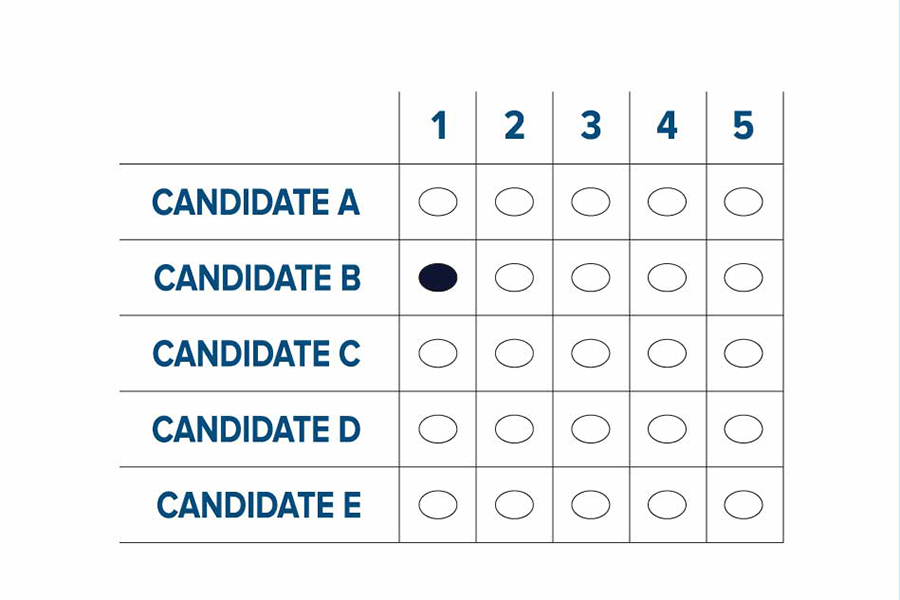by: Adam Roberts
New York City is now using ranked-choice voting (RCV), which allows voters to select more than one candidate in order of preference. The transition is occurring due to the results of a 2019 NYC Charter ballot referendum, during which voters overwhelmingly approved the use of RCV for primaries and special elections. While a few special elections have already taken place using RCV, the first major test of the system will be the upcoming June 2021 primaries for New York City Council, borough presidents, comptroller, and mayor.
Instead of voting for a single candidate, voters will select up to five candidates by ranking them in order of preference; if no candidate receives a majority of the vote, an “instant runoff” will occur, where the last place candidate is eliminated, their votes now going to the second-choice candidates of their voters. This works successively for the second-to-last-place candidate, third-to-last-place candidate, and so on, until a candidate receives a majority of the vote.
Prior to this, New York City used first-past-the-post voting, with voters voting for a single candidate. This candidate would win an election with a plurality of votes, except for citywide positions, which required 40% to win (otherwise a runoff election was held weeks later between the top two candidates). This created a situation where candidates were winning crowded races with few votes. For instance, the 2013 Democratic primaries for city council saw multiple candidates win with a third or less of the vote, spurring activists to fight for RCV, ultimately leading to the successful 2019 ballot referendum.
New York City’s adoption of RCV is unique in that it is only for primaries and special elections, not general elections. RCV is generally adopted to combat Duverger’s Law, a political science theory that holds that plurality voting (like first-past-the-post) limits the influence of minor parties. Notably, RCV was adopted in Maine due to the belief that smaller left-leaning parties were acting as “spoilers” for the Democrats, forcing their voters to vote Democratic out of fear that Republicans would win. In 2018, this belief seemed validated when a Democrat won a US House race in an RCV election by being the second choice of voters of left-leaning independent candidates. In New York City, where nearly all races are determined by Democratic primaries, activists were most focused on instituting RCV for primaries.
RCV’s adoption has already changed the way in which races are being run. Elected officials and advocacy groups, like AIANY, are supporting multiple candidates in races instead of one. Many anticipate that as we approach the final weeks of the election, like-minded candidates may form coalitions with each other, asking voters to rank both candidates in whatever order they choose.
If you have more questions about RCV, please feel free to contact Adam Roberts, AIA New York’s Director of Policy, at aroberts@aiany.org. You can also check out AIANY’s 2021 Voter Guide, which provides a list of candidates who are strong supporters of architecture. RCV provides an opportunity for you to select candidates that are supportive of different issues that matter to you, and we have helped determine the candidates that are most supportive of the issues that matter to the profession.
Pulse Points:
- In partnership with the New York State Association for Affordable Housing (NYSAFAH), AIANY’s Housing Committee is hosting “A Conversation on Housing with Candidates for Manhattan Borough President” on Wednesday, April 14, from 4:00 – 5:30 pm. The event will offer AIANY members the opportunity to hear directly from Council Members Ben Kallos and Mark Levine, two of the leading candidates for Manhattan Borough President, about their visions for housing in Manhattan.
- On Friday, May 14, from 9:45 – 11:15 am, AIANY is hosting its two Highly Rated candidates for Mayor, former HUD Secretary Shaun Donovan and Comptroller Scott Stringer. AIANY members will be able to interact with the candidates and learn how they plan to push their architectural ideas for the city.








